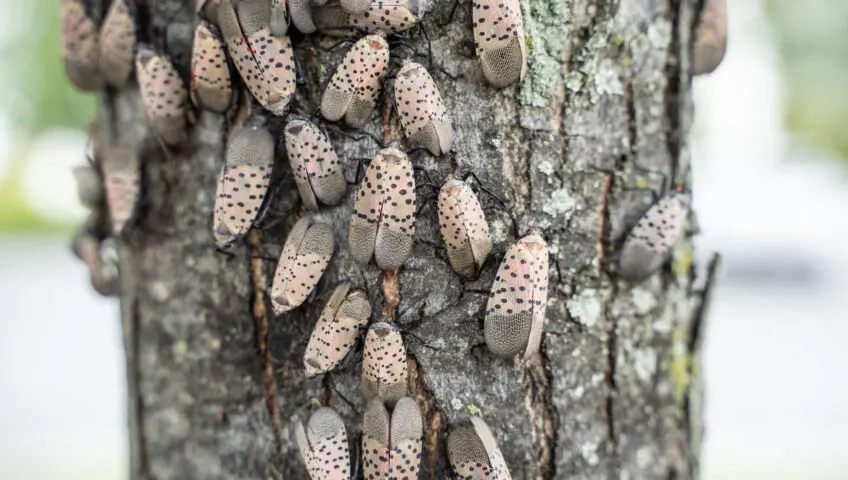The spotted lanternfly is pretty to look at, but don’t be deceived by the charming appearance. These destructive insects have invaded the U.S. from China and pose a threat to our trees, especially fruit-bearing ones. They’ve been moving through New Jersey, Pennsylvania and other northern states, but people are concerned the pests could be headed to Florida.
Adult lanternflies measure approximately an inch long, and have large, spotted wings. Their front wings are light brown with black polka dots, concealing their bright yellow bodies and bold, red hind wings. Often mistaken for moths and flies, lanternflies (Lycorma delicatula) are actually neither. They are members of the order Hemiptera, which includes cicadas, aphids and hoppers.
Lanternflies pose no direct threat to humans through sting or bite, but are a serious problem, nonetheless. This invasive insect is incredibly harmful to our crops, orchards and vineyards. Feeding from the sap from the trees and vines, lanternflies leave the plants in a weakened state, leaking precious nutrients. Once the lanternfly has had its fill, sap continues to weep from the trees and transforms into a sticky residue called honeydew, resulting in the growth of mold and fungus. This sugary residue also attracts additional pests, such as wasps, hornets, bees and ants.
Adult lanternflies typically begin laying eggs in late September and continue through late November to early December. A great time to check your trees for the lanternfly is during the day, when the insects tend to gather in large groups on trunks and stems. Early detection is key to preventing their spread. Luckily, the eggs can be removed simply by scraping the masses off tree trunks.
Unfortunately, the lanternfly does not have natural predators. Human intervention is vital to preventing these invaders from spreading farther south. The first sighting was reported in 2014 in Pennsylvania, but the spotted lanternfly has been steadily making its way down the coast and across the country. If you think you’ve come across a lanternfly in Florida, please reach out to the experts at Slug-A-Bug. We will come out for a free, no obligation assessment. Don’t let this spotted nuisance take over our beautiful state.
For more information:
https://www.growingproduce.com/fruits/florida-growers-on-alert-for-spotted-lanternfly/
https://blogs.ifas.ufl.edu/pestalert/2018/05/04/spotted-lanternfly-lycorma-delicatula
https://www.britannica.com/animal/lanternfly
https://edis.ifas.ufl.edu/publication/IN1220
https://ag.umass.edu/landscape/fact-sheets/spotted-lanternfly
